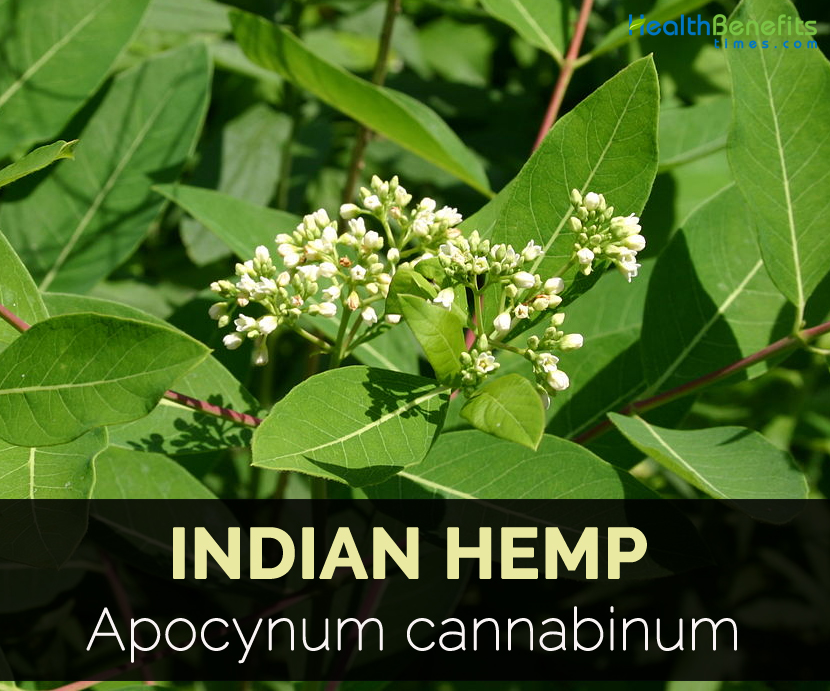| Indian hemp Quick Facts | |
|---|---|
| Name: | Indian hemp |
| Scientific Name: | Apocynum cannabinum |
| Origin | Native to North America, of the Dogbane family, growing wild in pastures and fields. |
The flowers of this species are greenish-yellow, a light pink or purple inside, while those of the Bitter root are white, tinged with red. Poisonous to stock, but usually avoided due to the bitter, rubbery juice. The seeds, oil and fiber of hemp have uses for paint, bird preparations and clothing. Indians made nets and rope from the fibers of pounded stems and roots.
Facts About Indian Hemp
| Name | Indian hemp |
|---|---|
| Scientific Name | Apocynum cannabinum |
| Native | Native to North America, of the Dogbane family, growing wild in pastures and fields. |
| Common/English Name | Dogbane, Honeybloom, Milkweed, Bitter root, Black hemp, Lechuguilla, Hemp dogbane, Westernwall, Amy root, Prairie dogbane, Indian hemp |
| Name in Other Languages | English: American-hemp, Indian hemp, Indian-hemp, Common dogbane, Dogbane, Hemp dogbane, Prairie dogbane, Clasping-leaved dogbane, Velvet dogbane; German: Amerikanisches Hundsgift |
| Medicinal part | Root |
| Leaf | Broad lanceolate, 7–15 cm (2 ¾ –6 in) long and 3–5 cm (1 ¼ –2 in) broad |
| Flowering Season | July to August |
| Seed | Linear, 4-6 mm. long |
Flower
Flowers are tubular which forms in clusters of ¼-inch or smaller tubular or bell. Individual flowers have five white or greenish-white petals which are fused at the base and the lobes are erect or flaring. Plants have several clusters at the top of the plant and at the end of branching stems in upper part of the plant. The center and terminal flowers in the cluster open at first. Clusters are round spreading to broader and more flattened cluster.
Leaves and stem
Generally leaves are oval with pointed tip, rounded or narrowing at the base measuring 6 inches long and 2½ inches wide having smooth edges and white or cream colored veins. Lower leaves may be stalk less. The underside of the leaves is slightly hairy. Typically stems are hairless and reddish brown which exudes a milky sap when broken. Stem and leaves have waxy feel.
Fruit is a slender and slightly curved pod measuring 4 to 8 inches long. Seeds are small brown with a tuft of white hair to carry them off in the wind. Usually capsules occur in pairs.
Medicinal uses
- It is used to promote sleep, malaria, migraine, periodical headache, insanity, acute mania, whooping cough, delirium, anemia, asthma, convulsion, tetanus, dysuria and nervous exhaustion.
- For gonorrhea, use the infusion of seeds.
- Apply the paste of fresh leaves for tumors.
- The juice of fresh leaves is used for treating head lice and dandruff.
- In North America, it is used for treating various complaints such as coughs, rheumatism, asthma, whooping cough, pox, internal parasites, diarrhea and increase milk flow in lactating mothers.
- It is used as a tonic and also for treating syphilis.
- Use the weak tea made from dried roots for cardiac problems.
- Use the milky sap for venereal warts.
Culinary uses
- Indians use dried rhizomes and roots for kidney complaints.
- Seeds are consumed raw or cooked.
- Seeds are grounded into powder and used as meal.
Dose
1 teaspoonful of the root to 1 pint of boiling water; take a tablespoonful of the tea three to eight times a day. Of the tincture, 2–5 min. four times a day.
References:
https://pfaf.org/user/Plant.aspx?LatinName=Apocynum+cannabinum
https://en.wikipedia.org/wiki/Apocynum_cannabinum
https://www.minnesotawildflowers.info/flower/indian-hemp
https://www.canr.msu.edu/resources/hemp-dogbane-apocynum-cannabinum
https://www.morningskygreenery.com/product/apocynum-cannabinum/
Comments
comments
